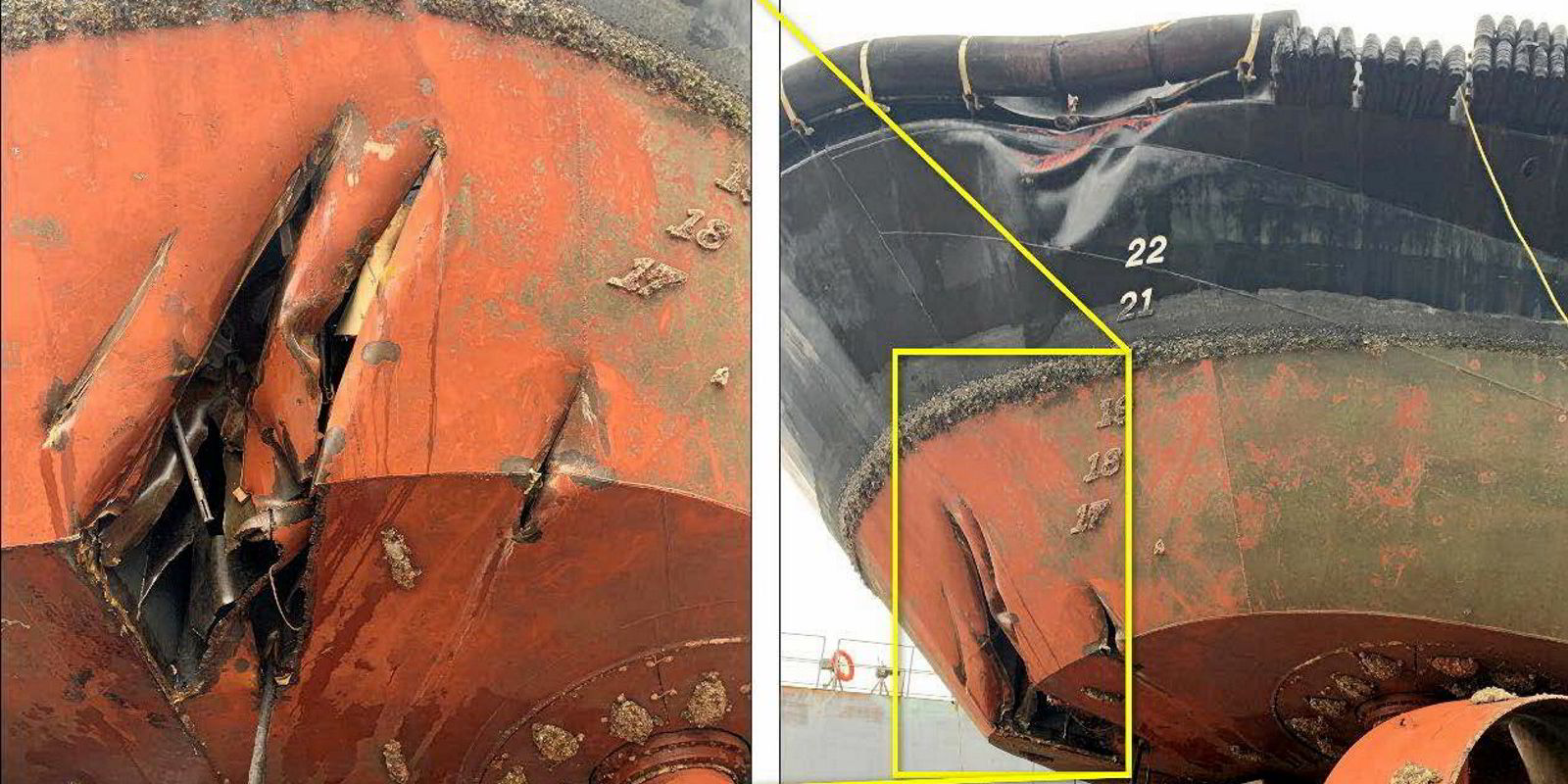The mate of a tug allowed his vessel to get too close to a Saudi VLCC it was helping to berth resulting in a collision between the two, an accident report has found.
The tug Mark E Keubler (built 2018) and Bahri’s 319,000-dwt tanker Nisalah (built 2010) collided in the channel near Ingleside, Texas, in January 2023.
The tug’s hull was breached by the tanker’s propeller, which was also damaged in the collision. There were no injuries to crew on either vessel.
The captain of the tug grounded the vessel to prevent it from sinking, and, while aground, a small sheen of hydraulic oil was observed near the tug.
The tug’s aft peak tank and Z-drive machinery room were breached, flooding both spaces to the waterline and inundating equipment. Salvage expenses for the tugboat were estimated at $1m, and repair costs were estimated at $3m.
All four blades on the Nisalah’s propeller sustained damage when it struck the Mark E Kuebler’s hull, including loss of metal along the tips and leading edges, as well as gouges and ripples on the blade faces. Repair costs to the Nisalah were estimated at $3.9m.
The Saudi Arabia-flagged Nisalah’s cargo tanks were empty, and the vessel was in ballast condition at the time of the collision. The ship was due to berth at the South Texas Gateway Terminal, where it was scheduled to load a cargo of crude oil.
The US National Transportation Safety Board’s accident report said that the tug had been drawn in toward the tanker by hydrodynamic forces, which the tugboat had insufficient reserve power to counteract due to the transit speed of the vessels.
“A small vessel operating near a large vessel must maintain a safe operating distance or have sufficient reserve power to counteract the hydrodynamic forces to avoid being pulled into the other vessel and risking collision,” the report said.
“If a small vessel must operate near a larger vessel — such as a tugboat conducting harbour-assist operations — the operator of the smaller vessel should be aware of the hazards caused by hydrodynamic forces and, if necessary, maintain a safe distance until the larger vessel slows and the hydrodynamic forces are reduced.”
The NTSB also found that the tug had insufficient reserve power to counteract the hydrodynamic forces due to the transit speeds of the vessels.
“Owners and operators of Z-drive tugboats that perform harbour-assist operations should set speed limits for advanced manoeuvres such as stern-first approaches,” the report said.
“These limits may vary for different classes of tugboats based on design. Tugboat operators should communicate these limits to ship masters or pilots in command of the vessels that they are assisting before engaging in these manoeuvres.”
After the casualty, the tug’s owners G&H Towing instituted a policy restricting stern-first landings of tugboats on assisted vessels to speeds of 7 knots or less.
According to a company representative, attempting the manoeuvre at speeds over 7 knots would be ineffective because all of the tug’s engine thrust would be used to maintain the tugboat’s position alongside the assisted vessel.
The company representative added that the margin for error “significantly increases” at speeds greater than 7 knots, and stated, “we have recently seen incidents across industry, and the common factor is operators trying to perform advanced manoeuvres at high speeds which gives a higher risk factor with no reward”.



